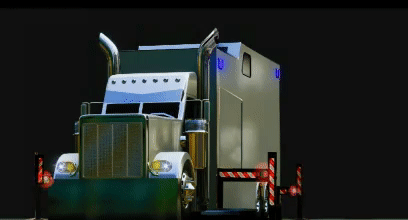
THE
BERTHA PROJECT
"Helping people in need can be rewarding!"

Service Project 1

The Bertha and Kiki Research Rescue units are designed to operate in communities impacted by natural disasters. The vehicles' primary function is to provide direct delivery of essential supplies to the curb of those in need, without exposing the residents to further danger.
Service Project 3

The Advance Newell Team will likely be manned by semi-retired volunteer members who are RV owners. These individuals already possess the knowledge of operating an advanced RV and will be a great asset to the organization.
Service Project 5

It is a requirement for all members to wear uniforms that are easily recognizable at all times. The exact colors of the uniforms will be determined based on the team vehicle in operation. The coolest part about our uniforms is the pants. We have decided to use parachute pants. Originally created for military use, the pants became popular during the 1980s. Made of nylon or polyester and are typically loose-fitting and baggy, with a wide elastic waistband and multiple zippered pockets.
Service Project 2

The Research Rescue Unit is equipped with a diverse range of supplies, including but not limited to water, mylar blankets, glow sticks, first aid kits, and dehydrated snack packs. These items will be made available at no cost to those affected by a state of emergency.
Service Project 4

The Bertha Project seeks to provide large amounts of water to the curbside of homes most affected by a disaster.
Service Project 6

The founder of the Bertha Project, a career firefighter for 22 years, understood the challenges of mass casualty incidents. The creation of the Stacker Trailers provides 20 mobile beds on location, which can be used as an on-scene critical care climate control facility. This is important because evaluating patients in adverse weather can be hazardous for rescuers and patients. Bertha & Kiki will be operated by retired first responders and will be designated a medical transportation vehicle. If ever needed to carry out large transportation of patients, the trailers can handle the load. We also use standup rollercoaster-style seats secured to the front wall for aids to be able to monitor patients while in transit.

Service Project 7

Service Project 8
The Bertha and Kiki Research Rescue Units will be technologically advanced and visually impressive. One notable feature is the hybrid capability of the truck, which will be fitted with Hyliion Technology for increased efficiency and improved performance.
The Bertha Project comprises two main divisions:
1. **Firefighters:** They operate Bertha & Kiki, directly delivering essential supplies to impacted communities.
2. **Retired Law Enforcement (PIOs):** They provide disaster relief security support to local law enforcement through tasks like minor report handling, managing road closures, conducting emergency evacuations, and patrolling communities to prevent looting. Our goal is to deploy ten retired patrol cars alongside Bertha & Kiki. The PIO vehicles will be equipped with emergency lights in purple, white, and amber. These colors are set to become the recognized standard for this and similar disaster relief organizations in the future. As more retired first responders join in support, it's imperative to establish a universal signaling system, especially given the anticipated rise in major disasters that will undoubtedly challenge communities and local authorities striving to alleviate human suffering."


Service Project 9
The Research Rescue Units will respond to crises during extreme weather conditions. One unique feature that Bertha & Kiki will possess is a low-angle quad outrigger system.
These types of stabilization apparatuses are typically on fire department aerial vehicles. The RRU's outriggers will be deployed under severe winds that reach upwards of 60 miles an hour to prevent a rollover when riding out a storm.


Service Project 10

The Bertha & Kiki Research Rescue Units will feature two large cargo doors on each side, with each roll-up door leading to a "Warehouse" area capable of storing 200 jugs and 1000 8 oz bottles of water. Additionally, these units will be equipped with hydraulic rescue tools, which will be used exclusively for removing obstacles impeding escape during disasters.
